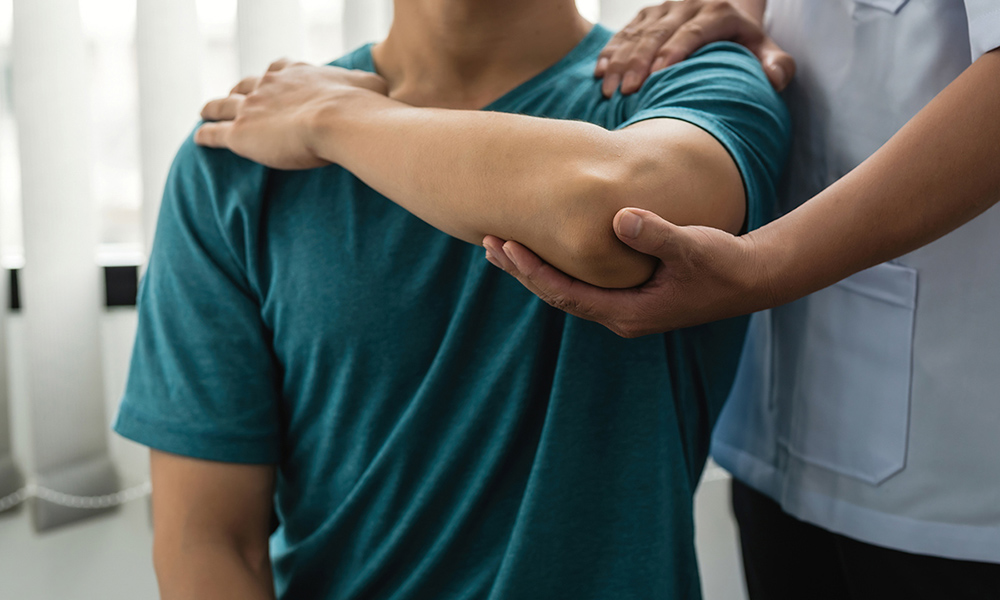Restoring Strength & Mobility
Post-trauma rehabilitation is essential for individuals recovering from serious injuries, including fractures, dislocations, ligament tears, and muscle damage. A structured rehabilitation program focuses on restoring movement, reducing pain, and regaining strength while preventing long-term complications.
Rehabilitation is tailored to each patient’s needs, ensuring a safe and gradual return to daily activities, work, or sports. Early intervention and a guided recovery plan can significantly improve long-term outcomes.
Benefits of Post-Trauma Rehabilitation
- Restores Mobility & Function – Helps regain movement and flexibility.
- Prevents Joint Stiffness & Muscle Weakness – Strengthening exercises improve recovery.
- Reduces Pain & Swelling – Therapeutic interventions ease discomfort.
- Enhances Balance & Coordination – Prevents future injuries and falls.
- Facilitates Safe Return to Activities – Gradual reintroduction to daily and sports activities.
Common Conditions Requiring Post-Trauma Rehabilitation
- Fractures & Dislocations – Regaining strength after bone injuries.
- Soft Tissue Injuries – Treating ligament, tendon, and muscle damage.
- Post-Surgical Recovery – Rehabilitation after orthopaedic surgery.
- Spinal Cord & Nerve Injuries – Improving neurological function and movement.
- Traumatic Brain Injuries (TBI) – Enhancing cognitive and motor recovery.
Components of a Rehabilitation Program
Initial Assessment & Treatment Planning
- Evaluation of mobility, strength, and pain levels.
- Development of a customised rehabilitation strategy.
- Establishing short-term and long-term recovery goals.
Physiotherapy & Strength Training
- Targeted exercises to improve flexibility and joint function.
- Progressive resistance training to rebuild muscle strength.
- Manual therapy to reduce stiffness and enhance movement.
Pain Management & Therapeutic Techniques
- Ice and heat therapy for pain relief.
- Electrotherapy and ultrasound treatment to stimulate healing.
- Soft tissue massage to reduce scar tissue formation.
Functional Training & Balance Therapy
- Gait retraining to restore normal walking patterns.
- Balance exercises to enhance coordination and prevent falls.
- Sport-specific rehabilitation for athletes returning to play.
Recovery & Rehabilitation Timeline
- Initial Healing Phase (0-6 Weeks) – Pain management, gentle exercises, and mobility training.
- Strengthening & Endurance Phase (6-12 Weeks) – Restoring function through resistance exercises.
- Recovery (3-6 Months) – Full rehabilitation with sport or work-specific exercises.
- Long-Term Monitoring & Maintenance – Regular check-ups to ensure lasting recovery.
Why Choose Advanced Orthopaedics for Post-Trauma Rehabilitation?
Expert-Led Rehabilitation Programs
Led by Dr Sarbjit Singh, a Senior Consultant Orthopaedic Surgeon, our clinic provides specialised recovery plans tailored to each patient’s needs.
Personalised & Comprehensive Care
We design customised rehabilitation strategies to ensure optimal recovery and long-term mobility.
State-of-the-Art Techniques
Our clinic integrates modern physiotherapy, manual therapy, and rehabilitation techniques to deliver the best outcomes.
Take the Next Step
If you are recovering from trauma or surgery, a structured rehabilitation program is essential for restoring function and preventing long-term issues. Schedule a consultation with our team at Advanced Orthopaedics to create a tailored rehabilitation plan.





